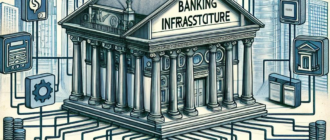The world of banking is rapidly evolving, driven by advancements in technology and the rise of fintech companies. One of the most significant developments in this space is the emergence of white-label banking solutions that facilitate instant payments. This article delves into the intricacies of fintech infrastructure, the concept of white-label banking, and the benefits of instant payments.
Understanding Fintech Infrastructure
Fintech infrastructure refers to the underlying technology that powers financial services, enabling companies to offer innovative banking solutions. This infrastructure includes various components such as:
- Payment Gateways: Facilitate the processing of transactions.
- Core Banking Systems: Manage accounts and customer data.
- APIs: Allow different systems to communicate and integrate.
- Cloud Services: Provide scalable storage and computing resources.
By leveraging these technologies, fintech companies can create tailored banking experiences that meet the needs of their customers.
What is White-label Banking?
White-label banking allows businesses to provide banking services under their own brand without the need to build the underlying technology from scratch. Essentially, a fintech company develops a banking platform, and other businesses can rebrand it and offer it to their customers. This model provides several advantages:
- Cost Efficiency: Reduces the investment needed to launch banking services.
- Speed to Market: Enables companies to quickly enter the banking sector.
- Focus on Branding: Allows businesses to concentrate on marketing rather than technology.
White-label banking is particularly appealing to non-financial companies looking to diversify their offerings and provide more value to their customers.
Instant Payments: A Game Changer in Banking
Instant payments refer to transactions that are processed in real-time, allowing funds to be transferred between accounts within seconds. This capability has transformed the way consumers and businesses conduct transactions. Key benefits of instant payments include:
- Improved Cash Flow: Businesses can access funds immediately, enhancing liquidity.
- Convenience: Consumers can make payments anytime, anywhere, increasing satisfaction.
- Reduced Risk: Instant payments minimize the risk of fraud and chargebacks.
The integration of instant payments into white-label banking solutions is crucial for providing a competitive edge in today’s market.
The Future of Banking with Fintech Infrastructure
The combination of fintech infrastructure, white-label banking, and instant payments is reshaping the financial landscape. As technology continues to advance, we can expect several trends to emerge:
- Increased Collaboration: Banks and fintechs will increasingly work together to enhance service offerings.
- Enhanced Customer Experience: The focus will be on delivering seamless and personalized banking experiences.
- Regulatory Adaptation: Governments will adapt regulations to accommodate new banking models.
These trends will drive innovation and efficiency in the banking sector, making financial services more accessible and user-friendly.
The rise of fintech infrastructure, alongside white-label banking and instant payments, is revolutionizing the banking industry. By embracing these developments, businesses can provide cutting-edge financial services that cater to the evolving needs of consumers. As we move forward, the synergy between technology and finance will continue to create new opportunities and challenges in the world of banking.






